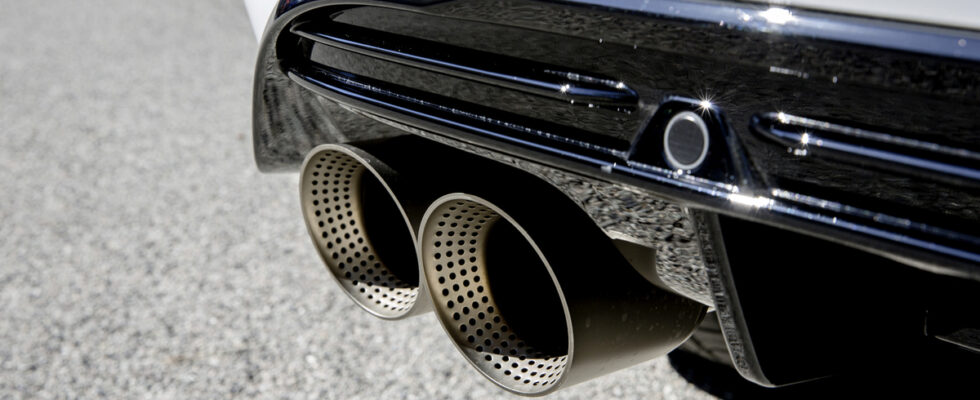Since 2020, the European Union has imposed CO2 emissions values not to be exceeded on car manufacturers. If they do not achieve their objectives, specific to each of the manufacturers, because they are weighted according to the average mass of their cars sold in the EU, they are subject to heavy fines.
In 2020, the year this new CAFE (Corporate Average Fuel Economy) standard came into force, the total amount of these fines would have reached 510 million euros. The Volkswagen group alone would have had to pay an amount of more than 100 million euros, for having missed its objective of only 0.75 g of CO2/km, but on a very large number of registrations in the EU. The Subaru brand had exceeded its average emissions targets by 34 g of CO2/km, for 16,176 registrations in the EU in 2020, which should logically earn it a fine of 52 million euros, or 3,230 € per car sold all the same (source: Automotive News Europe).
But surprise, in 2022, the year of the latest results published by the European Commission, not a single manufacturer would have had to pay a fine.
Not a single fine imposed in 2022
For the years 2020 to 2024, European regulators have set a target of 95 g of CO2/km for the automotive industry, according to the old NEDC measurement cycle. With the new WLTP cycle, this target is equivalent to 115.1 g of CO2/km. For comparison, the ecological penalty starts in France at 118 g of CO2/km (WLTP cycle) since 2024.
In 2022, the average emissions of cars sold in the EU fell to 108.1 g CO2/km (WLTP cycle). Only one manufacturer exceeded the threshold limit set for it, Bugatti, but with less than ten cars registered in the EU in 2022, the brand would not have had to pay a fine.
The average CO2/km emissions values (WLTP cycle) of the main car manufacturers and pools of manufacturers on their cars registered in the EU in 2022, as well as their respective targets. © European Environment Agency
To comply, other companies have used different strategies. The first was to train pools, which allow manufacturers to pool their CO2 emissions, within the same group or not. Honda and Jaguar Land Rover were thus able to join forces with Tesla to offset their CO2 emissions, for example.
The other lever which has made it possible to reduce manufacturers’ average CO2 emissions is obviously electrification. Since the CAFE standard only takes into account tailpipe emissions, electric cars are greatly over-advantaged. Not only do they officially emit 0 g of CO2/km, but also, due to their higher mass, they make it possible to soften the objectives imposed on manufacturers. The more heavy cars they register, the less strict their targets will be.
But this electrification is not only driven by 100% electric cars. Plug-in hybrid models, also heavier than traditional thermal cars, also benefit greatly from the regulations. As the European Commission recently recognized, the consumption and emissions values approved for these models do not at all reflect their actual use. In use, they emit 3.5 times more CO2 than announced by the WLTP cycle, on which the CAFE standard is based.
The Commission certainly plans to review the approval protocol for plug-in hybrid cars, but “these changes will apply in two consecutive stages, from 2025 and 2027” only.
Although no fine has been imposed for the year 2022 and the same could be true in 2023 and 2024, the CAFE standard has nevertheless benefited manufacturers whose cars emit the least CO2. THE pools between different manufacturers were thus not trained free of charge. To partner with Tesla, Honda and Jaguar Land Rover had to pay a substantial sum to the electric car manufacturer, in a way buying its “CO2 credits”.
We also note that the introduction of CAFE standards has accelerated the decline in CO2 emissions from cars sold in the EU, certainly exaggerated by the very optimistic approval values of electric and plug-in hybrid cars.
The average CO2 emissions of cars sold in the EU and the future targets set for manufacturers. © European Environment Agency
Next milestones difficult to reach before a dreaded transition to all-electric
Furthermore, several manufacturers are already fearing the next tightening of the objectives of the CAFE standard, scheduled for the year 2025. It is currently planned to lower the average objective set for the automobile industry to 93.6 g of CO2/km (WLTP cycle), then to 49.5 g of CO2/km in 2030 and to 0 g of CO2/km in 2035, when regulators plan to ban the sale of new thermal cars in the EU (excluding e-fuels).
The respective bosses of the Volkswagen group and the BMW group have therefore called on Europe to soften its objectives for reducing CO2 emissions. “It does not make sense that the industry has to pay penalties when the conditions for the rise of electric vehicles are not in place”, denounced Oliver Blume, CEO of the Volkswagen group (source: Bloomberg). On the forced march towards electric, Oliver Zipse, CEO of the BMW group, believes that“we do not take into account the fact that this is the free decision of millions of customers” (source: Automotive News Europe).
